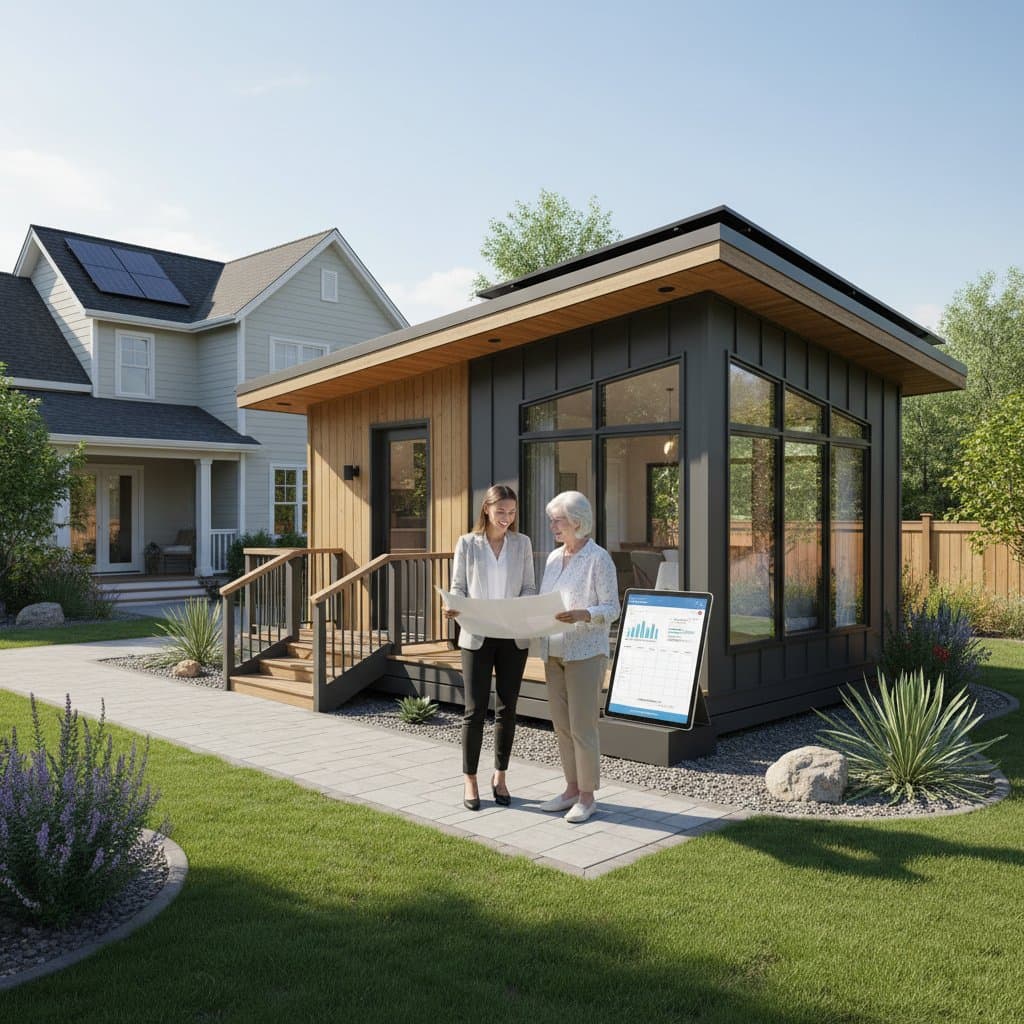2025 Wildfire Home Hardening: Costs and Materials
Wildfire seasons extend longer each year, prompting homeowners in at-risk areas to fortify their properties against escalating threats. Wildfire home hardening involves selecting fire-resistant materials and modifying structural elements to shield homes from direct flames, intense radiant heat, and airborne embers. These enhancements vary from straightforward tasks suitable for a weekend to extensive exterior overhauls, influenced by the home's construction era, current materials, and regional fire hazards.
Knowledge of suitable materials, associated expenses, and implementation strategies forms the foundation for developing a residence more capable of enduring wildfire exposure.
Key Areas to Focus On
Effective home hardening employs a multi-layered approach. Every element, ranging from the roof to outdoor features, bolsters the structure's fire resistance.
1. Roofing Systems
Roofs represent prime targets for ignition, as a lone ember on flammable surfaces can spark widespread fire.
Recommended Materials:
- Metal roofing: This option endures harsh conditions, resists combustion, and offers longevity. Standing seam panels or interlocking shingles minimize crevices that might trap embers.
- Clay or concrete tiles: These materials repel fire and deflect heat, provided installers apply appropriate underlayment and secure edges.
- Asphalt shingles with Class A rating: Homeowners often select this budget-friendly choice, which delivers adequate safeguards when paired with fire-retardant underlayment.
Cost Range:
Metal or tile installations average $8 to $20 per square foot, encompassing labor. Class A asphalt shingles range from $5 to $9 per square foot, including setup.
Pro Tip:
Examine ridge caps, valleys, and transitions to walls for openings. A gap as small as one-quarter inch invites embers. Apply metal flashing and sealants rated Class A to seal these vulnerabilities.
2. Vents and Soffits
Vents supply essential airflow but serve as entryways for embers, potentially igniting attic spaces or crawlspaces. Soffits, the undersides of eaves, often harbor debris that fuels hidden fires.
Recommended Materials:
- Metal mesh vents with 1/8-inch openings: These screens block embers while permitting ventilation, meeting standards from the International Wildfire Code.
- Noncombustible soffit panels: Options in fiber cement or metal replace wooden versions, preventing ember penetration.
- Ember-resistant vent covers: Adjustable models allow seasonal airflow adjustments without compromising safety.
Cost Range:
Replacing standard vents costs $200 to $500 per unit installed. Soffit retrofits range from $10 to $15 per linear foot.
Pro Tip:
Position vents away from prevailing winds and ensure attic insulation remains free of combustibles. Clean screens quarterly to maintain airflow and prevent blockages.
3. Windows and Doors
Heat causes standard glass to fracture, creating pathways for fire and embers. Wooden or thin doors burn rapidly, compromising the building envelope.
Recommended Materials:
- Tempered glass windows: These panes withstand thermal shock two to three times better than ordinary glass.
- Multi-pane assemblies: Configurations with dual or triple layers limit heat conduction and enhance shatter resistance.
- Metal or fiberglass doors: Opt for solid-core designs clad in metal, which outperform wood in fire tests.
Cost Range:
Installed tempered dual-pane windows cost $700 to $1,200 apiece. Solid metal doors fall between $600 and $1,500, varying by style and fire-rating level.
Pro Tip:
Fit metal mesh screens over windows to deflect embers, and evaluate rolling shutters for elevated-risk locations. Apply heat-resistant weatherstripping to frames for airtight seals.
4. Exterior Walls and Siding
Siding materials ignite easily under ember assault or radiant heat, spreading fire to the home's core. Walls without proper barriers accelerate damage.
Recommended Materials:
- Fiber cement siding: This durable, noncombustible alternative mimics wood aesthetics while resisting flames up to 1,000 degrees Fahrenheit.
- Stucco or plaster finishes: Applied over noncombustible backings, these provide seamless, heat-reflective surfaces.
- Metal siding panels: Lightweight and recyclable, they offer superior protection in high-wind ember zones.
Cost Range:
Fiber cement installations average $8 to $14 per square foot. Stucco applications range from $7 to $12 per square foot, including preparation.
Pro Tip:
Secure siding with corrosion-resistant fasteners and overlap panels to eliminate gaps. Treat any remaining wood trim with intumescent paints that expand to block heat.
5. Decks and Patios
Exposed decks accumulate leaves and embers under planks, igniting before the primary structure and channeling heat toward entryways.
Recommended Materials:
- Composite decking rated Class A or B for fire: Products from manufacturers like Trex and Fiberon undergo rigorous wildfire simulations.
- Metal framing: Steel beams and posts remove flammable supports entirely.
- Concrete patios: This solid choice demands little upkeep and fully resists ignition.
Cost Range:
Fire-rated composite decking costs $25 to $40 per square foot with installation. Concrete patios average $12 to $18 per square foot.
Maintenance Tip:
Clear spaces between boards of buildup regularly. Install metal flashing at wall junctions. Prohibit storage of flammable goods, such as cushions or gas cylinders, under decks.
Cost Breakdown for a Full Home Hardening Project
Expenses for complete wildfire hardening hinge on home size, present conditions, and regional labor costs. Projects divide into tiers based on scope:
-
Basic Upgrades:
Target vents, roof perimeter seals, and removal of nearby flammables.
Estimated cost: $3,000 to $8,000 -
Intermediate Upgrades:
Encompass roof renewal, siding enhancements, and window swaps.
Estimated cost: $25,000 to $60,000 -
Comprehensive Hardening:
Addresses every outer surface, entry points, decks, and foundational changes.
Estimated cost: $80,000 to $150,000 or more, scaled to property dimensions and selections.
Substantial though initial outlays appear, numerous insurers and government initiatives provide incentives, including rebates and premium discounts. Local fire agencies frequently conduct complimentary evaluations to pinpoint deficiencies.
Safety and Installation Precautions
Superior materials prove ineffective without precise application. Adhere to these protocols for secure, compliant work:
- Engage certified professionals versed in wildfire regulations and protocols like ASTM E108 and UL 790.
- Establish defensible space by removing flammable plants within 30 feet of the home.
- Confirm adequate separation between decks, fences, and walls to avoid flame bridging.
- Conduct yearly checks for fissures, openings, or failing seals that permit ember access.
- Apply fire-retardant coatings to unavoidable wood elements.
Assessing Long-Term Benefits
Home hardening demands investment yet yields enduring advantages in risk mitigation and upkeep reduction. Materials such as metal roofs, fiber cement siding, and composite decks endure for decades with basic care. Owners frequently experience insurance savings and elevated resale values post-retrofit.
One documented example involves a resident who substituted wooden siding with fiber cement and fortified vents. During a nearby blaze, the property sustained negligible harm, unlike adjacent homes that suffered total destruction. The endeavor totaled approximately $38,000 and averted catastrophic loss.
Essential Strategies for Effective Hardening
- Prioritize roof and vent modifications as initial measures for maximum impact.
- Record all improvements with invoices and specifications to support claims and incentives.
- Upgrade adjacent fences from wood to metal or stone where they adjoin the structure.
- Opt for gravel or rock ground cover instead of organic mulches near foundations.
- Equip chimneys with spark arrestors to contain and repel embers.
Integrated efforts across components create a cohesive shield far stronger than isolated fixes.
Sustaining Fire-Resistant Features
Hardening requires ongoing attention, as elements weather, joints loosen, and landscapes encroach. Plan routine reviews to verify vent patency, gutter clearance, and sealant integrity. Refresh paints or treatments on visible surfaces periodically to sustain protective qualities.





